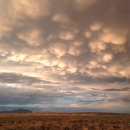Assessing traditional and emerging grazing strategies for creating a mosaic of diverse habitat patches for sagebrush sagebrush
The western United States’ sagebrush country encompasses over 175 million acres of public and private lands. The sagebrush landscape provides many benefits to our rural economies and communities, and it serves as crucial habitat for a diversity of wildlife, including the iconic greater sage-grouse and over 350 other species.
Learn more about sagebrush associated birds
Funding Year | Amount | Location |
FY22 | $119,682 | Madison, Phillips, and Vally Counties, Montana |
FY23 | $100,318 | Madison, Phillips, and Vally Counties, Montana |
Project Description
This project will use a multi-agency/partner collaboration to pilot a large-scale assessment of an emerging grazing strategy designed to mimic pre-colonial grazing patterns by bison. The goal is to determine the value of these grazing strategies for enhancing sagebrush habitats and the associated birds that rely on these habitats and for achieving increased utilization and productivity that can benefit producers.
Partners
U.S. Geological Survey, Montana State University, Bureau of Land Management, The Nature Conservancy, private landowners/individuals


